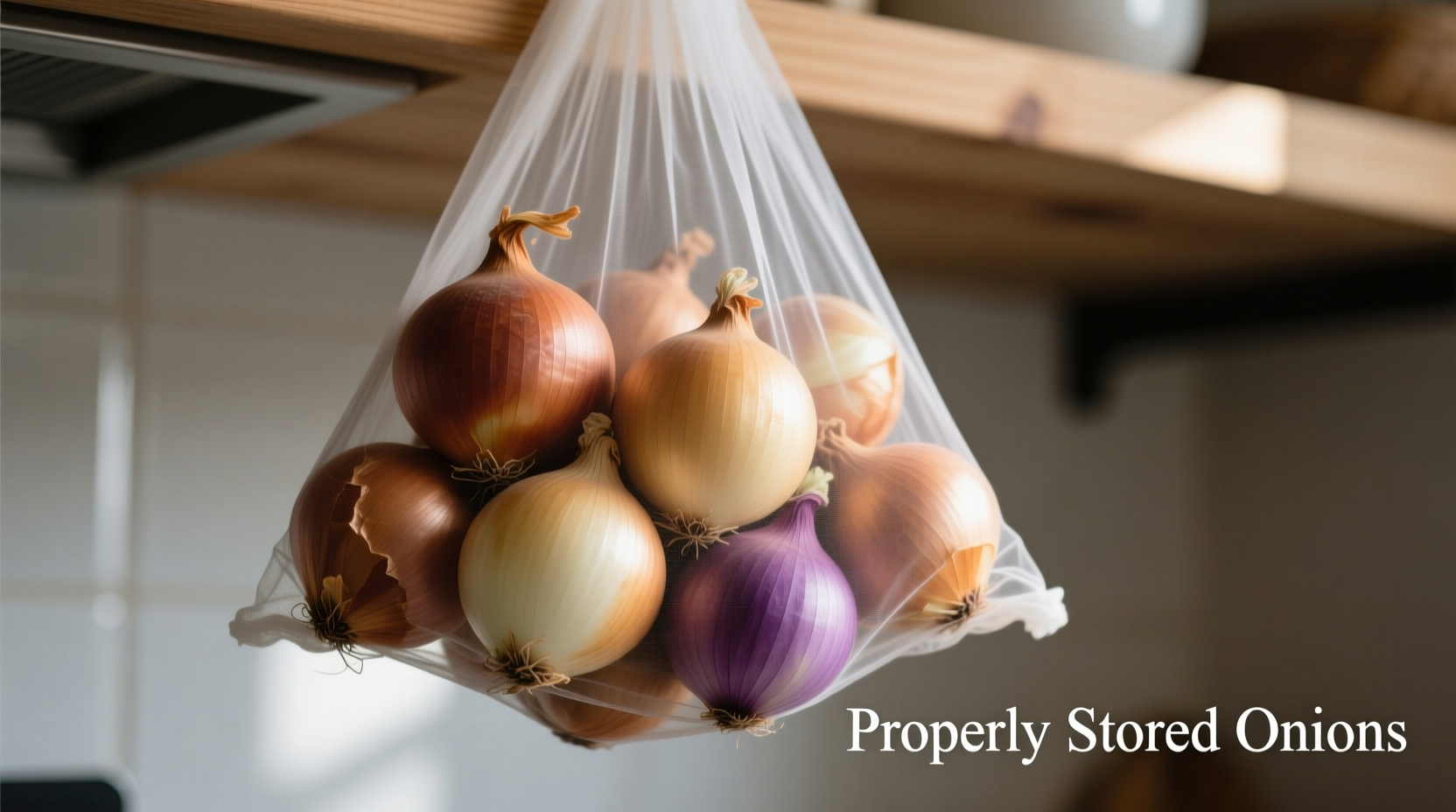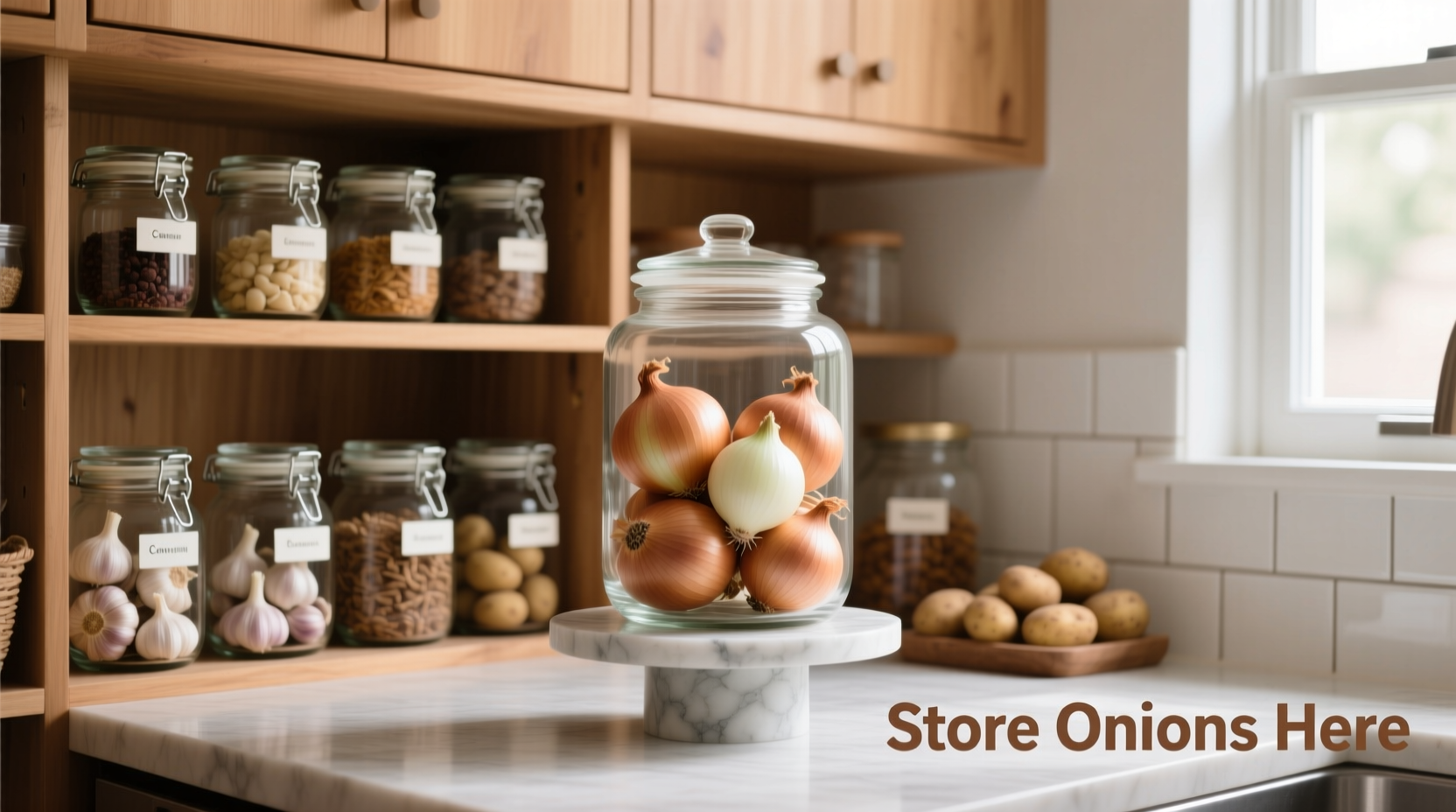Discover exactly where to keep onions for maximum freshness and flavor preservation. This guide reveals professional storage techniques backed by food science research that can double your onion shelf life while maintaining optimal texture and taste.
Understanding Onion Types and Their Storage Needs
Not all onions have identical storage requirements. The variety significantly impacts where to keep onion properly:
| Onion Type | Optimal Storage Location | Expected Shelf Life | Special Considerations |
|---|---|---|---|
| Yellow Storage Onions | Cool, dark pantry | 2-3 months | Best long-term storage variety |
| Red Onions | Cool, dark pantry | 3-4 weeks | Skin may fade over time |
| White Onions | Refrigerator (crisper drawer) | 2-3 weeks | Higher moisture content |
| Green Onions | Refrigerator (in water) | 1-2 weeks | Change water every 2-3 days |
| Shallots | Cool, dark pantry | 1-2 months | Store away from garlic |
Creating the Perfect Onion Storage Environment
Where to keep onion properly depends on creating specific environmental conditions. The National Onion Association's postharvest research confirms that temperature and humidity control directly impacts shelf life.
Room Temperature Storage Solutions
For most storage onion varieties (yellow, red, and shallots), your pantry provides the ideal where to keep onion location when properly configured:
- Ventilated containers: Use mesh bags, wicker baskets, or paper bags with holes - never plastic bags which trap moisture
- Darkness matters: Store away from light which triggers sprouting according to USDA food safety guidelines
- Elevation is key: Keep onions off concrete floors which transfer moisture
- Separation requirements: Maintain at least 12 inches between onions and potatoes which emit ethylene gas

Refrigeration Options for Short-Term Storage
When considering where to keep onion for immediate use (within 2-3 weeks), refrigeration becomes appropriate for certain varieties:
- White onions: Store in the crisper drawer in a paper bag with holes
- Green onions: Trim roots, place in glass with 1 inch of water, cover with plastic bag
- Cut onions: Seal in airtight container for up to 7 days
According to UC Davis Postharvest Technology Center research, refrigeration below 32°F (0°C) causes onions to absorb refrigerator odors and develop off-flavors.
Avoiding Common Onion Storage Mistakes
Understanding where not to keep onion is as important as knowing the proper storage locations. Food safety experts identify these critical errors:
- Storing with potatoes: Ethylene gas from potatoes accelerates onion sprouting and decay
- Using sealed containers: Trapped moisture creates ideal conditions for mold growth
- Keeping in direct sunlight: Light exposure triggers premature sprouting
- Washing before storage: Excess moisture promotes bacterial growth
Long-Term Storage Solutions
For gardeners with surplus harvest or those seeking where to keep onion for extended periods, these professional methods deliver exceptional results:
- Curing before storage: Dry onions in a shaded, well-ventilated area for 2-3 weeks before long-term storage
- Temperature-controlled storage: Maintain 32-40°F (0-4°C) with 65-70% humidity for commercial-scale storage
- Vacuum sealing: Only for cooked onions destined for freezing (raw onions become mushy)
The USDA Food Safety and Inspection Service confirms that properly cured onions stored at 32-35°F with 65-70% humidity can maintain quality for 6-8 months.
Recognizing Spoiled Onions
Even with perfect where to keep onion practices, spoilage eventually occurs. Watch for these signs:
- Texture changes: Soft spots, mushiness, or excessive dryness
- Color deterioration: Dark patches or green sprouting
- Odor development: Sour or unpleasant smells
- Mold presence: Any visible mold means discard the entire onion
Remember that one bad onion can spoil the entire batch, so check your storage regularly and remove any compromised bulbs immediately.
Practical Storage Solutions for Every Kitchen
Regardless of your kitchen size, you can implement effective where to keep onion strategies:
- Small spaces: Use hanging mesh bags in a dark cupboard away from heat sources
- Apartment living: Store in a ventilated container on a high shelf away from the stove
- Large harvests: Use wooden crates with slats for air circulation in a cool basement
Professional chefs recommend checking your onion storage location monthly, rotating stock, and using older onions first to maximize freshness throughout the storage period.











 浙公网安备
33010002000092号
浙公网安备
33010002000092号 浙B2-20120091-4
浙B2-20120091-4